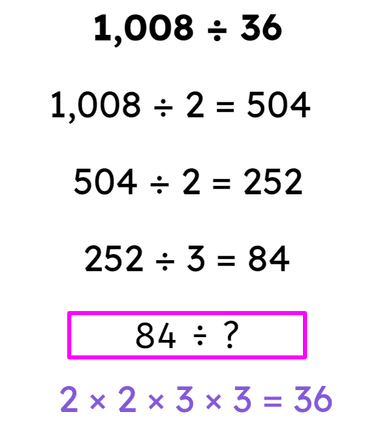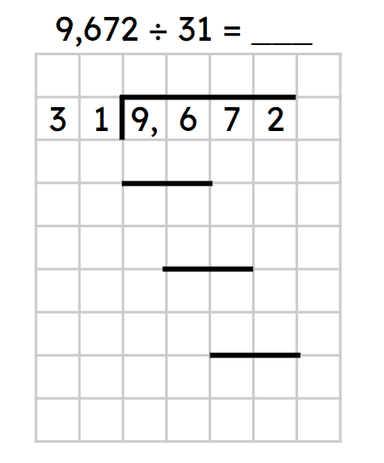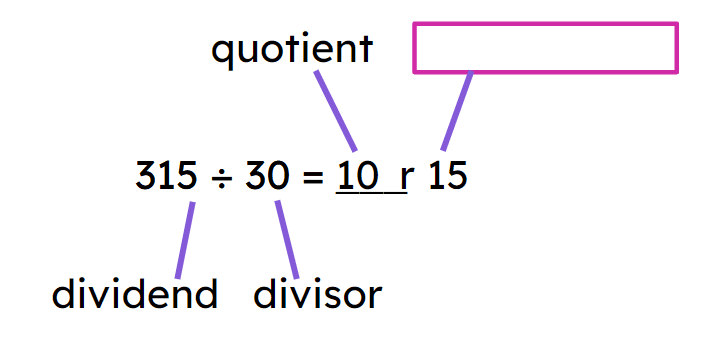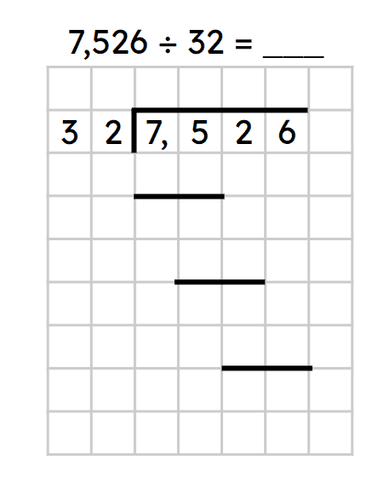Myths about teaching can hold you back
- Year 6
Dividing by a 2-digit divisor with a remainder
I can divide by a 2-digit divisor and find the remainder.
- Year 6
Dividing by a 2-digit divisor with a remainder
I can divide by a 2-digit divisor and find the remainder.
These resources will be removed by end of Summer Term 2025.
Switch to our new teaching resources now - designed by teachers and leading subject experts, and tested in classrooms.
These resources were created for remote use during the pandemic and are not designed for classroom teaching.
Lesson details
Key learning points
- A remainder is always less than the divisor.
- The remainder, the part left over, is written after the quotient and represented with an ‘r’.
- Listing multiples of the divisor improves efficiency and accuracy with written division methods.
Keywords
Long division - Long division is a method used for dividing large numbers by breaking the number down into smaller groups.
Remainder - A remainder is an amount left after a division.
Common misconception
Pupils may not make efficient use of multiplication facts when answering long division problems, especially 10 or 100 times the divisor.
Encourage pupils to make estimations using multiplication facts. Once the multiplication facts are completed, they could be used to ask quick-fire questions (e.g. what is 20 × 18? 50 × 18? 200 × 18?)
To help you plan your year 6 maths lesson on: Dividing by a 2-digit divisor with a remainder, download all teaching resources for free and adapt to suit your pupils' needs...
To help you plan your year 6 maths lesson on: Dividing by a 2-digit divisor with a remainder, download all teaching resources for free and adapt to suit your pupils' needs.
The starter quiz will activate and check your pupils' prior knowledge, with versions available both with and without answers in PDF format.
We use learning cycles to break down learning into key concepts or ideas linked to the learning outcome. Each learning cycle features explanations with checks for understanding and practice tasks with feedback. All of this is found in our slide decks, ready for you to download and edit. The practice tasks are also available as printable worksheets and some lessons have additional materials with extra material you might need for teaching the lesson.
The assessment exit quiz will test your pupils' understanding of the key learning points.
Our video is a tool for planning, showing how other teachers might teach the lesson, offering helpful tips, modelled explanations and inspiration for your own delivery in the classroom. Plus, you can set it as homework or revision for pupils and keep their learning on track by sharing an online pupil version of this lesson.
Explore more key stage 2 maths lessons from the Multiplying and dividing by 2-digit numbers unit, dive into the full primary maths curriculum, or learn more about lesson planning.

Equipment
Licence
Prior knowledge starter quiz
6 Questions
Q1.Complete the equation: 13 ÷ 4 = 3 r
Q2.Complete the equation: 386 ÷ 6 = If there is a remainder, write this using r
Q3.Select equivalent expressions with a product of 36
Q4.How could 1,008 be divided by 36?
Q5.Complete the missing expression from the box below

Q6.Calculate the equation using long division.

Assessment exit quiz
6 Questions
Q1.What is the missing label in this division equation?

Q2.Without calculating, select the expressions that will have a remainder.
Q3.Match the division equations to their quotients
30
70
105
90
80
Q4.Match the division equations to their remainders
r1
r2
r3
r4
r5
Q5.Which of the following is a reasonable estimate for the following equation. 7,526 ÷ 32 =
Q6.Calculate the equation using long division. If there is a remainder, write it using r.



